Why do we teach our students grammar and conventions skills?
Is it…
A) so they can fill out worksheets?
or
B) so they can become stronger writers?
Yeah, you guessed it — it’s B. 🙂 We’re trying to help our students become career and college ready. And that requires real writing … hopefully not filling out worksheets!
Given that, it makes sense that we should teach grammar in the context of writing, yes? Our students need to see how they can apply grammar and conventions skills to their own writing.
And research backs that up! (You can read all about best practices in grammar instruction in this post!)
At the same time, it can sometimes feel challenging to integrate grammar instruction into writing instruction. How do we make skills relevant for our kids? How do we cover all the necessary grammar skills?
In this post, I’ll explain how I teach grammar in the context of writing. These ideas are mostly relevant for K-2 but can also be applied to other grade levels!
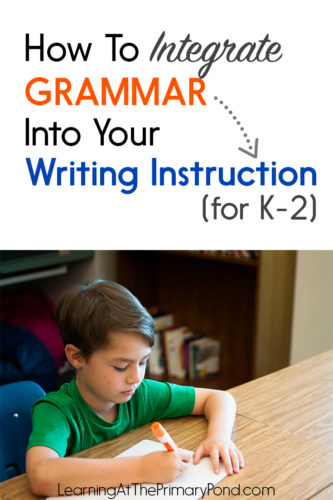
Best Practices Basics
We’ve already established that teaching grammar in the context of writing instruction is a best practice. But there are a few additional concepts I’ve learned that I want to share with you:
Best Practice #1: Kids need to have had ample time to discuss and learn about a convention / grammar skill BEFORE we ask them to apply it to their writing.
When we’re teaching kids about proper nouns, we can’t expect that one little lesson will be enough. Sure, after one lesson, they might be able to state what a proper noun is and even give some examples … but are they going to capitalize Disney World in their writing? Probably not yet.
We need to show our students examples of a convention used correctly in real texts (more about that in my next post). We can do some modeling of how we do it in our own writing. Maybe have the kids create some isolated examples.
But before we can expect them to really use the convention correctly in their own writing, they need proper instruction and time to absorb it.
Best Practice #2: When we’re working with our students and their writing, we can’t try to correct every single thing. And we can’t teach it ALL in one year; we have to be selective and choose what’s most important to focus on.
Do you ever read your students’ writing and think, “Whoa. Where do I even begin?!” Their writing has tons of spelling errors … missing or incorrect capitalization … missing punctuation … and incomplete sentences. Yikes!
It’s easy to look at our students’ writing and just start going bananas, showing them the 245,825 different changes they “should” make.
But we need to slow our roll!
Kids don’t learn ANYTHING when we’re trying to correct EVERYTHING!
We’ve gotta focus on just one convention at a time. MAYBE two. But we have to temporarily ignore certain mistakes in order to intentionally focus on a single teaching point.
We also have to accept that some grammar skills or ideas are just too challenging for our kids right now. And that’s okay. Fortunately, our students aren’t going to stop going to school after their year with us is over! 🙂 There’s so much they’ll learn—and we can’t teach it all in one year!
Best Practice #3: When we’re helping our students with their writing, we need to let them get their ideas down on paper BEFORE we start talking about grammar and conventions.
Speaking of helping our kids edit their writing … we can’t “jump on them” too quickly about conventions.
A first draft is just that—a draft! Our kids need time to get their ideas on paper before we start pointing out their missing periods and capital letters.
I love this quote:
“It does no good to point out editing errors to individual writers before they have their thoughts together. Sometimes errors get fixed by the writers themselves when they get their ideas organized.” (Dorfman & Dougherty, 2014, p. 160)
Yesss!
I’m so guilty of wanting to immediately start “helping” my kids with their writing by getting them to fix small mistakes. But they’re not even finished getting their ideas on paper yet!
What Writing-Embedded Grammar Instruction Looks Like in Practice
With those best practices in mind … let’s talk about what writing-embedded grammar instruction looks like.
(Btw, when I say “embedded,” I don’t necessarily mean that you don’t have a separate time for grammar instruction. I just mean that you’re tying it directly into your writing instruction too.)
Here’s the general process I use:
First, you’ll want to introduce students to the convention or grammar rule. You’ll want to use real sentences and possibly mentor texts. And you’ll want to explain the WHY behind a convention. (More details on this part coming in my next post.)
Once students have seen how authors use conventions and why they use them, you’ll want to do some modeling.
Maybe you do a shared writing piece, where the kids tell you what to write and you’re modeling correct application of the target convention (i.e., periods) and thinking aloud while you do it. (“Oh, I need a period here to tell the reader that this sentence is finished!”)
Or maybe you just write a single sentence as a model. Either way, you’ll want to think aloud and show students how and why you’re applying the convention or grammar rule.
Next, you’ll want students to try it out themselves. (It helps to start with a quick task rather than having kids dive into their own writing immediately.)
Maybe you have them work with a partner to create a sentence. (“Write a sentence about our class hamster, and use at least one adjective to describe him.”) Or maybe your kids are just speaking their example sentences out loud at first, and then eventually writing them down.
Once they’ve practiced in isolation (and they may need more than one practice round), your kids may be ready to apply the skill directly to their own writing.
Maybe you have them add a sentence or two to a piece of writing. Or maybe you have them edit part of their writing.
Keep the task small, manageable, and focused on the target convention. If they mis-use or forget other conventions, that’s okay—as long as they’re applying what they’ve just learned!
It often takes my students several go-arounds to really be able to apply something to their writing. (Meaning that I have to directly ask them to do something repeatedly before they do it on their own.)
In the next section of this post, I’ll give examples of specific grammar skills and conventions that kids can apply to different genres of writing.
But before we move onto that, I want to mention: in their book Patterns of Power, Jeff Anderson and Whitney La Rocca share a step-by-step process for having kids apply grammar and conventions to their writing. Their process is a little bit different from what I’ve described here, but it follows a similar guided release of responsibility. (It’s a great book for 1st through 5th grade teachers to have.)
Suggested Grammar Skills by Genre
One of the tricky things about writing-embedded grammar instruction is that a conventions/grammar rule doesn’t always apply to what kids may be currently working on in writing.
Sure, some conventions apply to all genres—like using a period at the end of a sentence. But some (like pronouns, for example) don’t necessarily apply to all genres.
Therefore, coordinating your grammar and writing instruction takes a little bit of advance planning! When I was creating my writing units, I mapped out ahead of time which conventions we’d practice in each unit. (You can do this at the beginning of the school year or when doing long-term planning for your writing instruction!)
Anyway, here are my topic suggestions for each genre (this will vary a bit by grade level):
Narrative
- Capitalizing names (proper nouns)
- Capitalizing date words (like “Monday”)
- Capitalizing the names of holidays (proper nouns)
- Capitalizing geographic names—for describing the setting
- Nouns
- Pronoun and antecedent agreement
- Verbs (including past and present tense; subject-verb agreement)
- Adverbs
- Adjectives – for describing characters, setting, etc.
- Apostrophes for possessives
- Apostrophes for contractions
- Dialogue and corresponding punctuation marks
Informational
- Using commas in a list (in how-to writing, kids can write out a list of supplies or ingredients; in books about animals, kids can write out a list of what the animals eat, etc.)
- Capitalizing geographic names (proper nouns) – for telling where an animal lives, giving information about a certain part of the world, etc.
- Capitalizing names of people – if you’re writing biographies
- Nouns (including past and present tense; subject-verb agreement)
- Pronoun and antecedent agreement
- Adjectives – for giving more details about an animal, place, object, etc.
- Apostrophes for possessives (“the giraffe’s neck is very long”)
- Apostrophes for contractions
Opinion
- Capitalizing words in the date and using commas in the date (if you’re writing persuasive letters, for example)
- Capitalizing product names (proper nouns) – great for when kids are writing about their favorite food, toy, etc.
- Nouns
- Adjectives – for having kids use descriptive language to describe something they like or do not like
- Apostrophes for contractions
This isn’t necessarily a complete list, but hopefully it’ll help you get started! Remember that some conventions DO lend themselves to all genres, like capitalizing the beginning of a sentence or ending punctuation marks.
An Example
Now that we’ve talked about best practices, a process for teaching grammar in the context of writing, and suggested grammar skills for each genre … let’s put it all together for an example lesson!
Here’s a 1st grade example on using commas in a list:
You write these sentences on the board:
I bought paper, pens, and envelopes at the store.
They served pizza, soda, cake, and ice cream.
You ask students, “What do these sentences have in common?”
Your kids (hopefully!!) notice the commas and/or the fact that both sentences are lists. If they don’t “get it,” prompt with “Look at the punctuation marks.”
You explain that writers sometimes need to use list sentences, where they list out more than one noun, adjective, or verb. When writers use list sentences, they have to separate out the items so that the reader can easily read them.
You have the kids identify each one of the list items in the sentences. Then, you use colored markers and/or circling to have the kids help you identify each comma in those sentences.
Then, you present an example or two of list sentences from books that you’ve previously read aloud to students. You place the text under the document camera so that students can see the sentence clearly. Again, students name the items in the list and point out the commas.
Next (in the same lesson or on a different day), you write a list sentence (something relevant to the kids) and model how you use commas. You think aloud about WHY you’re adding those commas as you write. You may write more than one example sentence.
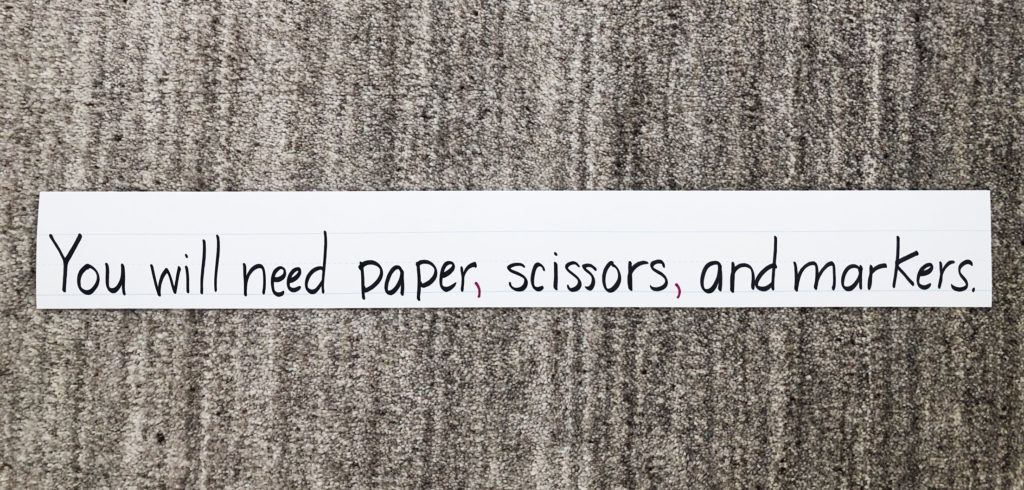
Next, the kids brainstorm list sentences. Let’s say that you’re working on how-to writing, so you have students create list sentences with materials or ingredients for a familiar how-to topic that you’ve discussed before (i.e., how to make hot chocolate).
Your students first say their invented sentences aloud to their partner and then write them down on paper or whiteboards. You support students in adding commas to their lists and provide corrective feedback as necessary.
After that, you could supplement this with some kind of hands-on activity. You could also discuss what happens if you change the convention (in this case, what is the effect on the reader if the writer does NOT include those commas?)
Last but not least… your students may be ready to apply the convention to their writing. Your kids are writing how-to books, so you have them take a finished how-to book and add a list sentence that describes the materials the reader will need in order to complete the “how to.” (This can be a whole writing minilesson in itself.)
And then you’ll need to help them practice again … and again … and again, before they’re independently writing list sentences with commas!
It may take even longer for them to be able to edit their own work, finding places where they’ve left out commas and inserting them.
So … having kids applying the skill to their own writing was the very last step in this whole process! Although I want to help my students make the connection between grammar and writing, they’re not actually applying a skill until they’ve had enough time to observe, experiment, and practice with my support.
Conclusion
I hope this post was helpful to you! In my next post, I’ll share more ideas for integrating grammar into your shared reading or close reading instruction.
Update! The grammar series is now complete! You can read each post in the series here:
- Best Practices for Teaching Grammar in K-2
- How to Integrate Grammar Instruction Into Shared Reading or Close Reading
- How to Find Time for Grammar Instruction
- 5 Tips for Helping K-2 Students Actually Apply Their Grammar Learning
- Grammar Skills by Grade Level: a List of Grammar, Language, and Writing Conventions to Teach in K-2
- 15 Picture Books For Teaching Grammar and Conventions
- Grammar ALIVE! A 3-Part Approach for Engaging, Relevant Grammar Instruction in K-2
Need grammar lessons, materials, and games for all year long? Click on any of the images below to read more about my Grammar Alive program for Kindergarten, first grade, and second grade:
Or, to learn more about my writing units (with embedded grammar instruction), please click HERE.
Happy teaching!
References
Anderson, J., & La Rocca, W. (2017). Patterns of Power: Inviting Young Writers into the Conventions of Language Grades 1-5. Portland, ME: Stenhouse Publishers.
Dorfman, Lynne, and Diane Dougherty (2014). Grammar Matters: Lessons, Tips & Conversations Using Mentor Texts, K-6. Portland, ME: Stenhouse.
Ruday, S. (2013). Five Recommendations for Teaching Common Core Grammar to Elementary Students. Larchmont, NY: Eye on Education.

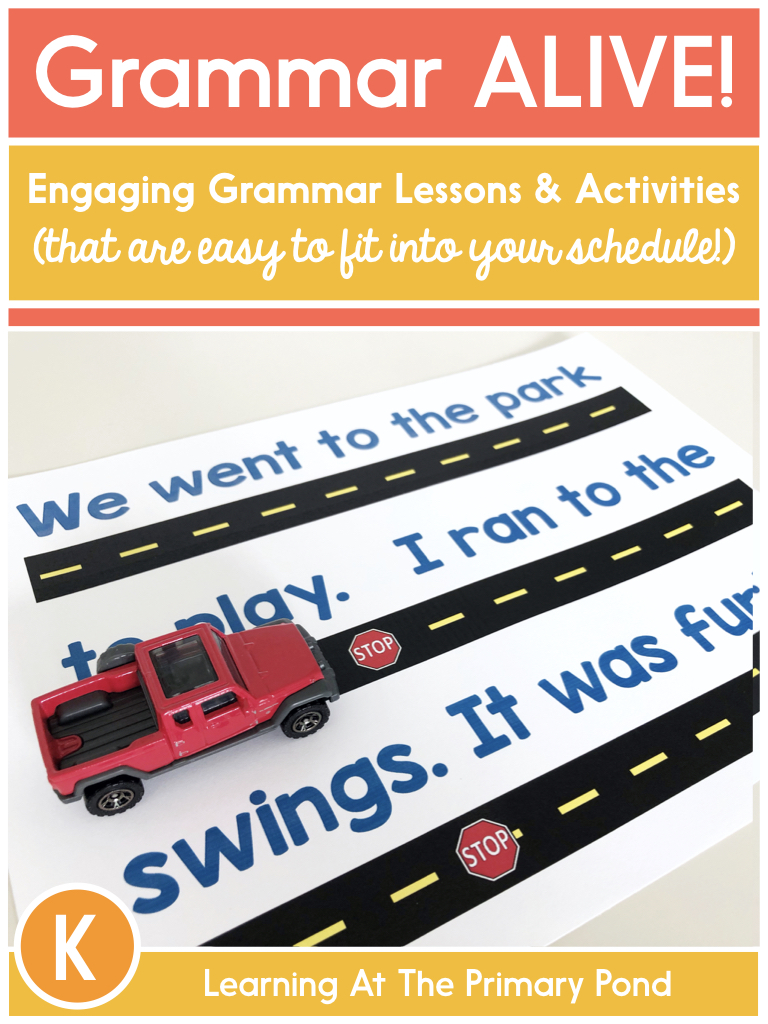
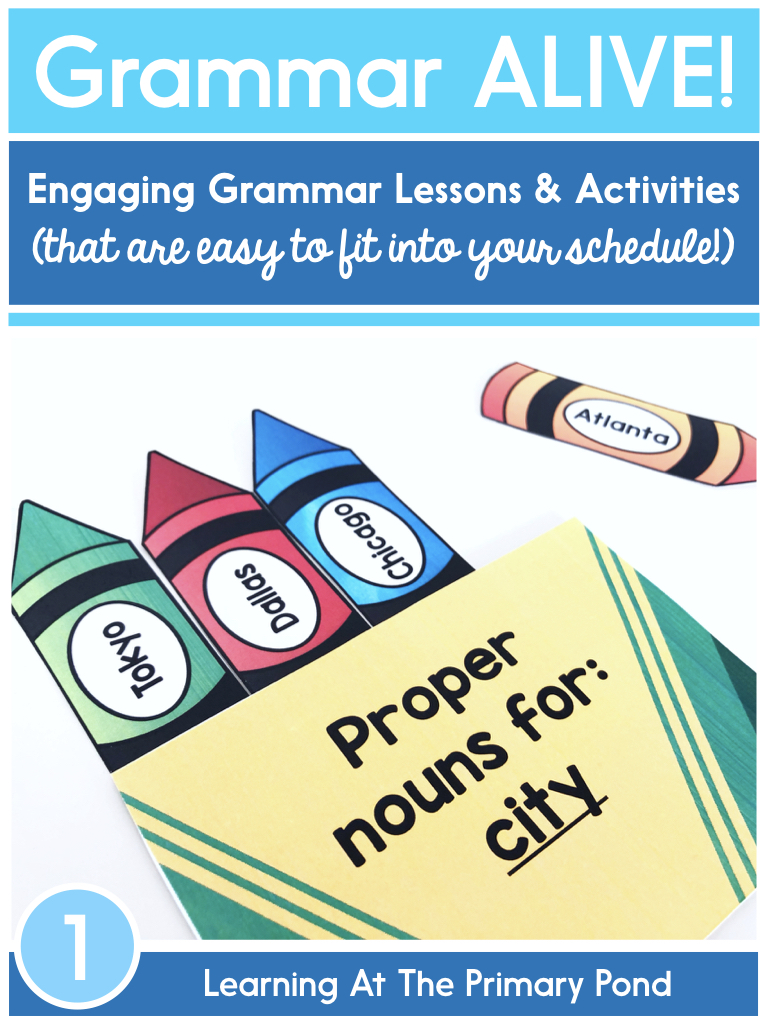

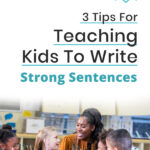
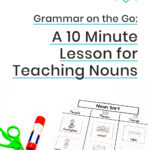

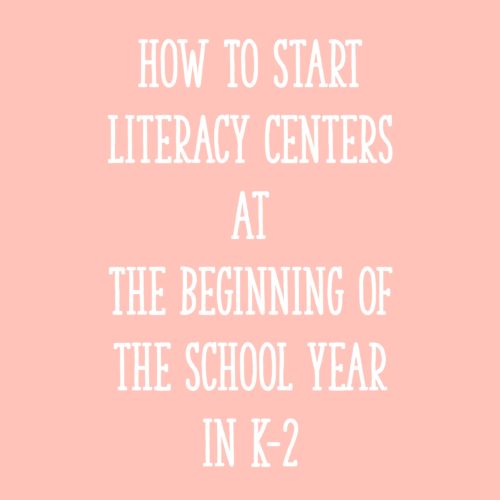

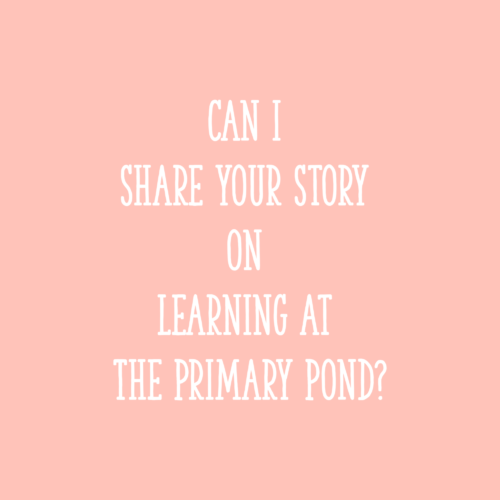






Great post! Can’t wait to read your next one!
Thanks so much, Moira!
Alison
Love it! Can you provide examples for kindergarten too?
Hi Ana! Future posts and my webinar (Sept 2019) will address Kindergarten in more detail. 🙂
Alison
Hi! I love this! I’m a second grade teacher, and I’ve been reading all s out mentor sentences in hopes of using it in my classroom next year. I have the patterns of power book as well! I’m wondering if you have any suggestions on how this may look on a weekly basis — like on Monday ____, Tuesday ____. Looking for some kind of routine to put in place to practice 🙂
Hey Melissa! I think my upcoming webinar (Sept 2019) will be helpful in addressing this. If you’re on my email list, you’ll get an invite! 🙂
Alison
Just ran across this post. I purchased your writing curriculum, but our district uses Wonders as the reading curriculum. It is broken into units per six weeks, and each six weeks spends 2 weeks on one particular genre. For example, the 1st six weeks we study realistic fiction, fantasy, and expository. Do you think it would be OK to teach writing in 2 week chunks based on the genre we are studying in reading, or should my writing instruction spend a longer period of time on each type of writing? I would still use your curriculum to cover the genres,… Read more »
Hey there! What a great question. I do think you could teach writing in the 2 week chunks that you’re referring to so that it aligns to your reading curriculum. You’ll of course have to scale back on what you’re teaching for writing and won’t be able to fit it all in! But I think you could do enough within that time span. Feel free to email me at alison@learningattheprimarypond.com if you want to go over more specifics!!